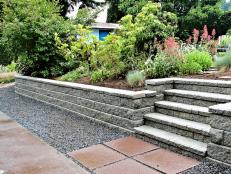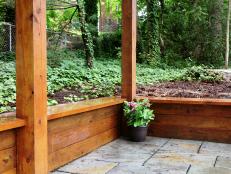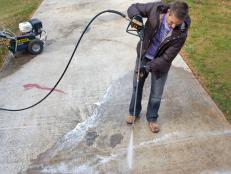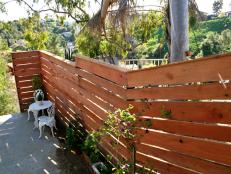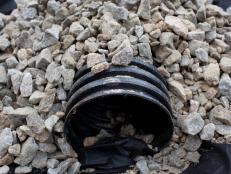How to Install a Timber Retaining Wall

Materials and Tools:
gravel
rebar
string
composite timbers
timber spikes
drainage pipe
drainage sleeve
stakes
shovel
hand tamper
level
tape measure
circular saw
sledgehammer
drill
spade bit
Steps:
1. Use landscape marking paint to outline the area where the retaining wall will be built. Drive stakes into the ground at each end. If the distance is greater than 8’, drive additional stakes so that the gaps do not exceed 8’. Tie a string to a stake at the wall’s desired height and stretch across to opposite stake or stakes. Use a string level to ensure that all the heights remain level and constant.
2. Excavate the entire wall base to a depth of 8". Spread approximately 4" of gravel evenly in the trench and rake the gravel smooth. Use a hand or power tamper to compact and level the area. Check for level and add or remove gravel as necessary until the appropriate height is reached.

3. Excavate the entire wall base to a depth of 8". Spread approximately 4" of gravel evenly in the trench and rake the gravel smooth. Use a hand or power tamper to compact and level the area. Check for level and add or remove gravel as necessary until the appropriate height is reached.
4. Install corrugated drainage pipe behind the first course of timbers and run the pipe to where the water can exit the area. Slip a drain sleeve over the drainage pipe to screen out sediment and prevent the pipe from clogging.
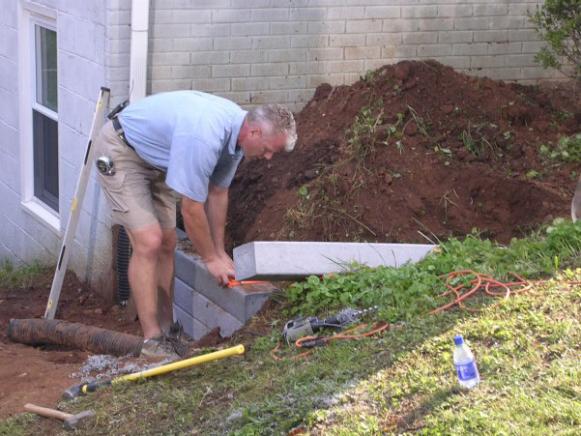
5. In similar fashion, cut timbers to appropriate length, lay in place, and level. Shims can be inserted where needed to make timbers level. To secure timbers, drill holes every two feet and drive 12' galvanized spikes into previous course. For top course, use spikes with a finished head for a more attractive look.
Tip: For added stability, it is wise to insert a few timbers perpendicular to the wall. Called "deadmen,” the timbers extend from the retaining wall deep into the ground behind the wall. Drive 2' lengths of rebar through the ends of the deadmen and into the ground.
6. Backfill the area behind the retaining wall with gravel to cover the drainage pipe. Continue backfilling with soil until the desired height is reached.






